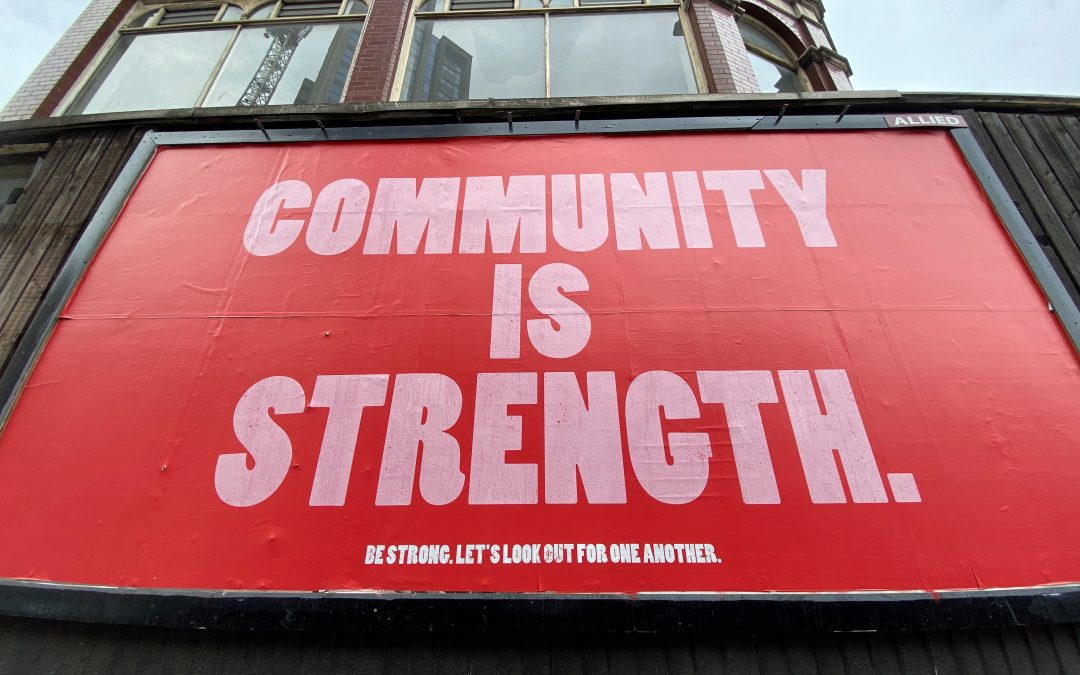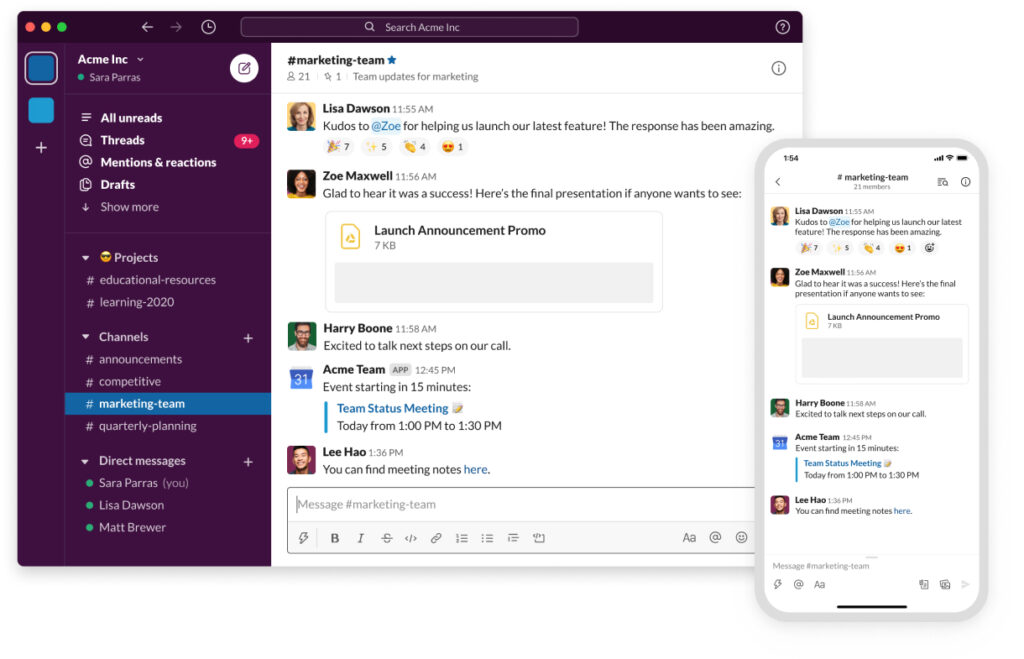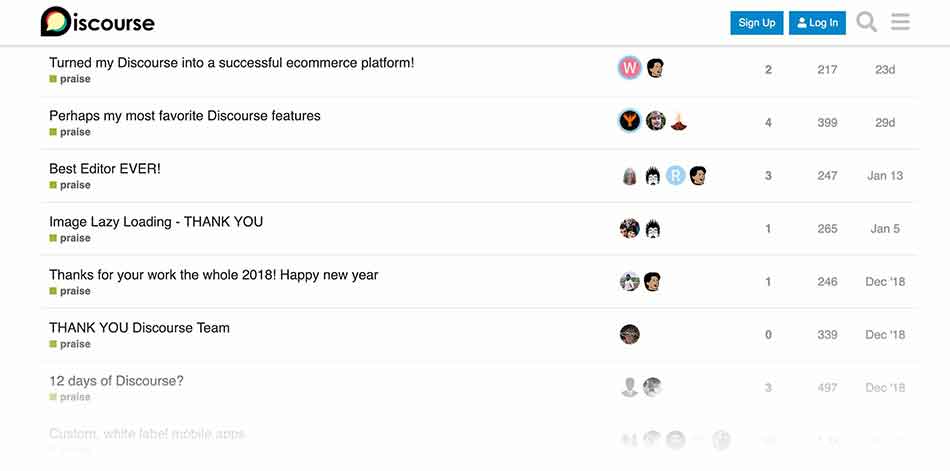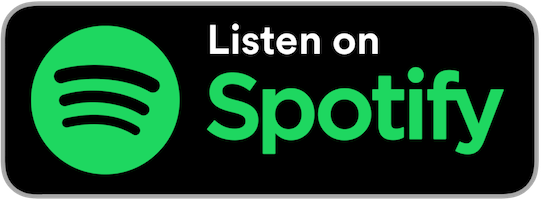
Sam Aaron On Live Coding Music
Sam Aaron, creator of Sonic Pi comes on to talk about live coding music.
Communities are changing the way we do business. Discover a concrete framework for building powerful, productive communities and integrating them into your business. My new book, ‘People Powered: How communities can supercharge your business, brand, and teams’, is out now, available in Audible, Hardcover, and Kindle formats.
As usual, thank you to the fantastic Marius Quabeck and NerdZoom Media for mixing the show!

David Spinks on Building Communities
David Spinks from CMX comes on to talk about how to build amazing communities and his brand new book.
Communities are changing the way we do business. Discover a concrete framework for building powerful, productive communities and integrating them into your business. My new book, ‘People Powered: How communities can supercharge your business, brand, and teams’, is out now, available in Audible, Hardcover, and Kindle formats.
As usual, thank you to the fantastic Marius Quabeck and NerdZoom Media for mixing the show!
Listen
Podcast: Play in new window | Download

David Jenyns on Building Amazing Business Systems
At the heart of every business is people. People though, need to work together to get great results, and this requires the magical balance of business processes, systems, and workflow.
The question is: where on earth do you begin in building these systems and workflows?
David Jenyns is an expert in building world-class business systems, having written multiple books and hosting his popular Business Processes Simplified podcast.
He comes on Conversations With Bacon to dig into the role of these systems and processes and how to optimize them. If you are running a business, or want to improve the place you work, be sure to check out our discussion!
Communities are changing the way we do business. Discover a concrete framework for building powerful, productive communities and integrating them into your business. My new book, ‘People Powered: How communities can supercharge your business, brand, and teams’, is out now, available in Audible, Hardcover, and Kindle formats.
As usual, thank you to the fantastic Marius Quabeck and NerdZoom Media for mixing the show!
Listen
Podcast: Play in new window | Download

How to Track Link Clicks With UTM codes
Please be honest when I ask you this: do you track your link clicks when you promote your content, build growth, or run advertising campaigns?
Campaign tracking might not some very exciting, but it is essential for great marketing strategy, market research, and optimizing your content to rank in search engines.
If you’re not a data-hound like me, you might not take your data-tracking quite so seriously. But be warned, because there are serious consequences for ignoring where people are coming from to your product, service, or community.
If you fail to develop a strategy, you’ll be “shooting in the dark” when it comes to growth and marketing decisions. Furthermore, if you’re not making tracking your priority, you’re losing out on all kinds of useful insight.
Luckily, today I’m showing you exactly how to implement some simple data-tracking using UTM codes. This takes about 5 minutes to do- but it’s so impactful when weaved into your growth plans.
While data tracking like this might not be the “sexiest” part of building movements and communities, this is actually where the impact is made, so listen up!
But first, what even are UTM codes?
“UTM” stands for “Urchin tracking module.” Urchin is the name of the company that invented this software, but was later acquired by Google in the early 2000s.
UTM codes are bits of text you can add to a URL that tell Google Analytics (or other dashboards) more about the traffic coming from that link. They are a powerful way to figure out where the traffic to your blog posts, videos, podcasts, and other material is coming from.
This helps us spot trends in how to use certain platforms more if they are more popular with our audience. For example, if a lot of people are coming to your blog posts from Twitter, wouldn’t it make sense to put more material up on Twitter? Yes indeed!
What do UTM codes tell us?
Depending how extensive your website and social media strategy is, you probably have more than a few links to manage. Every page of a website and every social media post can have a link, and UTM codes can make each link unique for tracking purposes.
UTM codes are added to the end of those links to show us:
- What source the specific traffic came from
- What marketing campaign is driving the traffic
- The medium that’s performing best for driving traffic
- Which keywords your traffic may be tied to
- And more.
Here is an example of a link with UTM codes added (the UTM codes are the bold bit):
https://www.baroncarta.com/?utm_source=youtube&utm_medium=youtube&utm_campaign=deviltosendIf you clicked this link, I’d be able to tell that you went to my band’s website coming from YouTube as part of a campaign to promote the song ‘Devil To Send’.
Okay, But How Do I Use Them?
Step 1: First, sign up for a Google Analytics account if you don’t already have one. It is totally free and you can use it to track the traffic coming from your UTM codes.
Step 2: Then, go to Google’s UTM Code Builder to create your first UTM code-laden link.
As pictured below, there are a few different things they’re asking for on that page (these are what are called UTM parameters):
- Website URL – this is pretty straightforward – it is the link you want to add the UTM codes to.
- Campaign Source – utm_source – where is the traffic coming from? Add a word that summarizes the general source of your traffic with this link (e.g.
facebook, twitter, webinarJam.) - Campaign Medium – utm_medium – this is more generalized, it’s asking the medium overall (e.g.
social, search, webinar, blog, podcast.) - Campaign Name – utm_campaign – what is the purpose of the campaign? Add a word to describe this (E.g.
leads, sale, hackathon, ad, eventpromo). You can also use this to sort different audience personas! - Campaign Content – utm_content – this is optional, but this can just be any details you include to differentiate the ad or content where the link itself is placed (e.g.
button1, button2, webinaropening, webinarclose). This is commonly used with paid search.
Remember: people CAN see these values if they take the time to look at the generated link, so don’t set the campaign for a new diet product to “fatbuster” for example. 🙂
At the bottom you can see your generated URL that you can then use when sharing links online. This provides enormous flexibility for you to customize campaigns and get real clarity on where your traffic is coming from.
Step 3: Lastly, use the final link wherever it is intended. For example, if you want to track social media marketing, you can track people coming from Facebook with facebook in the UTM codes. For Twitter, use a different link with twitter in the UTM codes. Make sense?
You don’t have to do anything else on the Google Analytics side of things. Just observe the data once you place the links.
Once your codes are placed in the proper locations, you’ll start to see data rolling in to your Google Analytics dashboard automatically.
Above is an example of a test Analytics dashboard using two links – one UTM link and one plain. You can see the difference in the traffic sources and medium, even though the website looked and functioned exactly the same for the viewer who clicked these links.
Now, let’s look at a few examples of other UTM code parameters so you have a good idea of how to sort this information/
Starting to get it?
Now go and take a look at the data and try to find patterns in where most of your traffic is coming from. This can help you to determine where your audience is primarily spending time and you can then experiment at placing different types of content in different locations.
Enjoy!
Image Credit: https://sitechecker.pro/utm-codes/

Christina Voskoglou on Understanding Developers With Data
Developers are a hot commodity that companies around the world are trying to do business with. Why? Because developers are enormously influential in which technologies are used at companies and how they are used. As such, many companies want to understand developers, their interests, and trends.
Christina Voskoglou has a long history of research and data and is Director of Research at SlashData. She has enormous experience of conducing research and how to convert that research into data that can be practically harnessed.
She comes on Conversations With Bacon to dig into why developers are important, how they measure developer engagement, the changing trends with developers and more. This covers frontend developers, backend developers, devops, devsecops, sre, and much more.
Communities are changing the way we do business. Discover a concrete framework for building powerful, productive communities and integrating them into your business. My new book, ‘People Powered: How communities can supercharge your business, brand, and teams’, is out now, available in Audible, Hardcover, and Kindle formats.
As usual, thank you to the fantastic Marius Quabeck and NerdZoom Media for mixing the show!
Listen
Podcast: Play in new window | Download

Six Key Lessons from the Fitbit Community
Fitbit has a truly passionate community of people who use their products and love the company.
The Fitbit Community is made up of more than 1,122,022+ members from all over the world with various backgrounds. Fitbit provides an interesting approach to community building strategies that we can all learn from.
Among an incredibly diverse community of users and fans, their forum is a great way to bring people together from around the world. The Fitbit Community is abuzz with users sharing their own stories, insights, discussion topics, and tips.
Business owners, entrepreneurs, and brands can take a lesson or two (in fact, take 6) from the Fitbit community on how to do communities well.
Here are some of the best lessons businesses can learn from the thriving Fitbit community:
(1) The Fitbit Community Formula: Passion + Desire + Brand
Healthy eating, exercise, sleep, taking care of your body and your mind are near-universal goals. Getting fit is a huge, global, and collective passion.
As such, the Fitbit community wraps itself around this shared obsession with maintaining a healthy lifestyle, and that makes for a strong case study for community members coming together to share their ideas and experience.
The Fitbit Community is a great example of how brands can tap into the community’s desire for something shared while what the community shares is also a strong use case for its own products.
Notice the “Health & Wellness” section on the community? Each of those subsections corresponds to a shared passion among their members.
This provides a logical breakdown so community members can dig into the areas most on their mind and find techniques and experiences their fellow members are able to share.
(2) Stories: what makes you do what you do?
What motivates you? Is it the desire to be healthy? To stay in shape? To get through another day at work or school?
Stories are what draw us to “each other” and to “brands”.
While the talk and discussions might be about the Fitbit brand or its products, what’s keeping the community together is really the stories they share.
The products are wonderful and well-designed, but the community shares more than just an interest in fitness technology; they share stories about what drives their own individual goals, struggles, and successes with health for themselves or those around them.
It can be motivating to see others who have found success in the Fitbit community, especially if you feel like you are struggling.
Here’s an example of a series of threads that help share user stories:
These story are an enormous motivator. When you build your community, ensure people are not just safe to share, but encourage them to share their stories.
(3) Learning from others: how did you do it?
We are hardwired to learn from each other. We want to follow, lead, share, educate, and inspire (or get inspired). This is an area where communities thrive.
The Fitbit community pulls everyone along, without making it look like members are “showing off”. It is more of a “run with me”, “let’s walk together”, or “daily challenges” – it brings people together to challenge themselves with new goals.
For example:
Members also post their own accounts of how they started and where they are at (while making mentions about several other lifestyle choices they made).
(4) Collaboration: we all grow together
Collaboration doesn’t have to be like a band working together to create the next best selling single worldwide; it can be as simple as keeping daily journal entries (inside the community) about the progress a member has been making…with weight loss, for example.
This collaboration takes many forms. It can be joining a group who loves a certain exercise (e.g. swimming). It can be collaborating on challenges. It can be creating shared content and material.
Communities are powerful because we pool our ideas and expertise together.
In this example below, in the “Mind & Body” section of the Fitbit community, look at a direct callout for people who want to get together, make friends, and get on the ride together.
We see inspiring threads about running marathons, going up hiking trails, and so much more.
(5) Product discussions and feature requests
With so many passionate Fitbit users, the community is a powerful source of input and ideas for new features, services, opportunities, and more that Fitbit can offer.
Fitbit are explicit about making it easy for people to not just submit feature ideas and requests, but to also share their interest and support for these requests together too:
Or, take a look at the continuously evolving chatter around Fitbit Apps:
Fitbit Apps, Fitbit Premium & Fitbit Coach are directly related to Fitbit’s success.
See how the conversations around their premium programs drive user engagement – it provides a regular place for community members to squeeze more and more value out of their Fitbit products:
Users recommend products based on others’ questions. Particular products are discussed — including merits, demerits, where products fall short sometimes, features, and benefits.
While the products (including coaching and premium subscriptions) are a central part of the community, it still relates to users’ needs, the features they need, or their actual experiences with Fitbit as a product.
(6) Gamification
Did you know that you have “earn” your place in some communities, forums, or even large social communities like Reddit?
Fitbit badges are also a great way to let you know how well you are doing with your goals.
Reddit allows other users to upvote your posts. With use and active participation on Reddit, you earn Karma.
See what’s happening there? It’s called Gamification. Smart marketers use it all the time.
According to Neil Patel,
“Consumers should be rewarded with virtual items (like points) for specific behavior (e.g. buying something, signing up, using the product, filling out their profile), and those virtual items should offer access to exclusive privileges and rewards, such as levels or prizes.”
Every game has levels you have to achieve (the name comes from there). Smart community builders and marketers use gamification in quizzes, courses, memberships, online magazines, and more. Several brands also have virtual points, miles earned, or coins that you keep for loyalty (some of these can be redeemed).
Throw in a certain level of gamification into an active forum and you’ll have people spending more time in forums, working hard to provide value to others, and truly creating a sense of engagement in the community.
The Fitbit community has leadership boards (most helpful authors and top answer authors) to help recognize active members with boards such as current council members, Fitbit member alumni, most helpful authors, top answer authors, and more.
Fitbit do amazing work in their community – I hope this is food for thought for your own community!

Slack vs. Forums: How to Choose
In 1934, American essayist Christopher Morley founded a literary society devoted entirely to Sir Arthur Conan Doyle’s Sherlock Holmes novels. The inaugural meeting occurred at the Christ Cella restaurant in New York City, as members gathered to discuss the character, novels, plotlines, and the author himself.
Regular conventions continued throughout the years, setting a precedent for fan communities that would influence groups like the Trekkies, Whovians, Potterheads, and more.
What does that have to do with communities?
Just this: communities of all kinds recognize the need to get together, to create meetings, tools, and methods for maintaining regular communication with one another in order to strengthen the sense of togetherness.
If you want to build a strong community, you need to create a place for members to get together regularly. Fortunately, these days we have numerous robust tools to facilitate conversation, but it’s important to select the tool that works best for your team and community.
By the far the most popular options are chatroom tools like Slack and group forums like Discourse and Vanilla Forums. In this article, I will look at the advantages and disadvantages of each of these, so you can choose the option that works best for you.
Remember, our goal is to provide a simple, sleek, and effective way for your people to connect, one that will offer repeated value for both new and existing users.
The right platform doesn’t merely facilitate communication but enables you to evaluate trends, so you can make informed decisions.
With that in mind, let’s look at the benefits and disadvantages of both Slack and forums.
Slack: Real-Time Discussions

Slack is a popular application that works as a chatroom, enabling team to communicate in groups or in private one-on-one conversations. Available through a website or via a smartphone app, Slack provides a level of flexibility and ease-of-use that has contributed to its widespread use in a broad array of team-based organizations.
There’s a free tier of the software, which only displays the most recent 10,000 messages and limits the number of third-party apps that can be integrated into the program.
There is also a paid plan, priced by the number of active users per month, which removes these limits. Slack even offers a discount for non-profit organizations.
Slack, and similar chat platforms, offers a few distinct advantages when it comes to facilitating teamwork and communication. Let’s look briefly at a couple of them.
1) Real-time Collaboration. When team members need to get quick answers to questions, provide fast updates, or get someone’s attention right away, Slack is the way to go. Individual team members will be notified right away when they receive a message—whether it’s a private one-on-one message or a group message—so they can respond right away.
Real-time discussions go a long way toward creating a sense of teamwork and collaboration, which is especially important when individual team members are geographically scattered.
2) Efficient. Instead of having to juggle emails, text messages, and other forms of communication across a number of platforms, Slack provides a streamlined place for conversations. The interface is simple and easy to use, and you can even attach documents and files to messages. Messaging specific people is as simple as selecting their name from a dropdown menu of team members or tagging them in a message using the @ symbol. There’s also an option for voice or video calls with other team members.
Of course, no platform is perfect, and there are some disadvantages to using Slack for your team collaboration.
Here are some of the most common downsides to consider:
1) Poor Conversation History. While the paid version of Slack saves messages, it doesn’t matter: it can be practically impossible to track down specific conversations. Users can scroll through long conversation chains or search for specific keywords, but it’s clunky and time-consuming. Its far easier to ask people directly, but that requires that they be on-hand to respond. This means you get less reuse of previous content.
2) Time Zones. One of the major selling points of Slack is the ability to have real-time discussions, but this becomes an awkward experience if team members are located across different distant time zones. Since Slack is less robust when it comes to searching for old conversations, this potentially eliminates its primary advantage.
3) App Adoption. For real-time discussion, it’s almost essential that users download the Slack app on their smartphones, but team members may be reluctant to install yet another app for team collaboration, even if the platform is intuitive and easy to use.
4) Difficult to Integrate. Slack is intended to provide one simple solution for all team discussions. Consequently, it doesn’t necessarily integrate well with other communication platforms, such as forums or blog comments (outside of merely referencing other services in Slack.)
5) Lack of SEO. Slack is not designed for search engine optimization, so content isn’t included on Google searches. Therefore, people outside of your group won’t discover you through Slack, which means it isn’t ideal for growing your community.
Ultimately, Slack is an accessible and easy-to-use platform for facilitating team discussions. Its efficiency can help a scattered team feel more unified, fostering a real sense of collaboration. While it’s not perfect, it is one of the better options out there, but you’ll have to decide if it’s right for you.
Forums: Organized and Easy to Search

A forum is an online discussion board (or boards) that enables team members to discuss various topics, ask questions, and participate in group discussions. Discourse and Vanilla Forums are good examples.
Unlike Slack and similar chat channels, forums generally aren’t meant to provide up-to-the-minute conversations or operate like instant messaging.
However, using forums for your team collaboration does provide a few distinct advantages. Let’s look at them briefly.
1) Organized Content. Forums generally provide easy ways to organize content by topic, author, date, and more, which makes it simple to search for previous conversations. This makes it possible to have structured conversations, such as Q&As, and it also greatly increases the reusability of previous posts and conversation threads, turning the forum into a repository of information that can be used as a reference guide.
2) More In-Depth Conversation. The nature of forum posts makes it easier to have in-depth conversations rather than individual chat lines. People can jump in and out of conversations, and look up specific posts. It’s also easier to include quotes, videos, images, and diagrams on a forum post.
3) Excellent SEO. Forum content is generally optimized for search and available on Google, which can serve as a great first step for getting people to join your community. For example, someone searching for specific open-source projects could find your forum posts in search results and navigate there.
4) Good Analytics. Most forums platforms offer robust analytics, so you can see which topics are attracting the most interest. This makes it easier to grow your community by shifting the focus to areas that drive the most participation (see my guide on how to measure forum metrics well.)
Of course, using forums rather than a chat service like Slack also has a few distinct disadvantages. Here are a few of the more notable downsides to using forums for your collaboration:
1) Not Real-Time. While forums can generally be configured to offer post notifications, conversation is generally slower than real-time, with some delay between posts. Depending on your community, this may feel less gratifying when people are trying to work together on an immediate issue.
2) Some look a bit…outdated. Quite frankly, some forum platforms have interfaces that look outdated. The exception here is Discourse: which looks and feels like a much more modern platform (which it is.)
3) Easy to Lose Track. While forums make it easy to have multiple structured conversations on a wide range of topics, it also places a burden on community managers to keep people coming back. It is very easy for forum users to inadvertently drop out of specific threads, which can leave topics or important conversations dangling without resolution.
4) Moderation. With some exceptions (e.g. Discourse), there is often a need for some degree of moderation to prevent spam, off-topic posts, or rude comments.
Which Communication Platform Right for You?
Every community needs some way to have regular conversation in order to feel a sense of collaboration and belonging.
The importance of selecting the right tool to facilitate these conversations can’t be overstated. If team members find it difficult to interact, it can kill the momentum of your community growth.
So, what do I recommend?
If you’re building a large-scale community with a global audience, forums are probably going to work better. They enable your audiences to have structured conversations and collaborate without requiring people to be online at the same time.
Since there’s no requirement for real-time participation in a forum, people across a wide-range of time zones can readily participate. Forums are also better for organizing information, building SEO, and providing support on a much broader scale even as your community continues to grow.
On the other hand, a chat program like Slack works very well for interpersonal communication, which can build a sense of teamwork and friendship on a smaller scale. Asking “How was your weekend?” feels awkward on a forum post, but it’s completely natural on Slack.
Combined with its real-time design, Slack provides a great place for people to spend time together. Even so, a forum will provide a better first port of call for your community members, so they can get up to speed and become familiar with the community at their own pace.
While it’s possible to integrate Slack with your forum, real-time discussion won’t integrate neatly with delayed forum posts, so I personally don’t recommend attempting it. Point community members to your forum for structured conversations, and consider using Slack for informal, real-time communication.
Interested in hearing more about community building? Read more blogs here.

Nine Critical Best Practices for YouTube Success
Looking for more YouTube channel success? If so, read on, I’ll be giving you 9 tips to make sure you can get there.
But First.. Why YouTube?
With over 2 billion monthly active users, and over one billion hours of video watched every single day, YouTube’s power and reach are almost incomprehensible. Indeed, the content is available in over 100 countries and in eighty languages—a truly global audience. The opportunities for reaching an audience are astounding.
YouTube really is the best place to be making content right now. However, getting a successful Youtube channel is no easy feat!
When you put content on YouTube, you face fierce competition. There are slightly more than 37 million channels on the platform, with the number growing every month. Indeed, 500 hours of video are uploaded every minute. So when you upload your video, it’s like squeezing a drop of water into the ocean.
How can you possibly gain and grow an audience when you’re just one voice in a sea of millions of voices? Beyond that, how do you even begin to measure success on YouTube?
Well, as it turns out, I have nine critical best practices for you today that will make sure your channel is more successful. These tips will make growing your audience and making an impact with YouTube videos easier!
But first.. we need to talk about metrics.
The Metrics that Matter Most for YouTube Success
The critical metrics for measuring success on YouTube are watch time, views, and subscribers. Let’s take a quick look at these three metrics, so you know how to track your own growth on the platform.
Watch time simply refers to the total number of minutes that people have watched your videos. The minimum threshold for monetizing your YouTube channel is 4,000 hours of watch time over the course of twelve consecutive months, so it’s one the biggest hurdles for new channels. Beyond that, if you’re getting a ton of views but your watch time is low, it means people are finding your content somehow, but they’re not consuming it. Clearly, that’s not what you want!
Views is fairly obvious. This metric refers to the number of times that a user intentionally initiated watching one of your videos, but YouTube only counts it if they watch for at least thirty seconds. The minimum threshold for new channels to get monetized is a whopping 10,000 views, so if you’re just starting out, you’ve got your cut work out for you!
Subscribers are those consumers of your YouTube content who decide to follow your channel. Ideally, you don’t just want people to wander onto your YouTube video, watch a few minutes, and then leave, never to return. Rather, you want to establish an ongoing relationship with them by convincing them to subscribe to your channels. You need 1,000 subscribers to monetize your channels, but the most popular “YouTubers” have hundreds of millions of subscribers! Imagine the reach!
Creating Content Isn’t Enough for Growth
Some companies think that if they simply create video content and post it regularly on their YouTube channel, they are bound to get traction sooner or later. While consistency is very important, bad, boring, or misaligned content probably won’t get recommended by YouTube’s algorithm, so it won’t land in front of your target audience.
If your audience does watch some of your content but finds that it provides little value, or doesn’t resonate with their needs and interests, they’re going to stop clicking on your videos. They may unsubscribe, even block your channel. Over time, if you’re not smart about the content you create, you can kill your channel, and once you do, it’s very hard to resurrect it.
Fortunately, if you implement a few best practices, you will avoid “channel death” and position yourself better to achieve healthy growth in all three key metrics: watch time, views, and subscribers.
Best Practice 1: Design Content for Your Audience
The key to growing your YouTube channel is to consistently provide value for your target audience.
For example, Oliver is the founder of a small but growing meal-kit company that provides organic and healthy food options. He wants to use YouTube to reach his target audience of up-and-coming young professionals. Creating regular videos that provide interesting and useful advice about nutrition, staying active, and making healthy choices — along with a generous dash of humor and personality — is going to reach his audience a lot better than straightforward boring ads, weird attempts at viral content, or dry “talking head” videos.
Best Practice 2: Make Your Videos Longer than Ten Minutes
In the early years of YouTube, videos were limited to ten minutes. Eventually, they bumped that to fifteen minutes, and then they removed the limit altogether. Ironically, these days YouTube encourages creators to make videos that are longer than ten minutes, because it keeps people watching and provides more opportunities for ads and ad revenue.
Oblige YouTube in this regard, and you’re more likely to get recommended to potential viewers, but beware! Don’t pad your videos with filler content. If you do, viewers will drop out early, and that could reduce your chances that they’ll watch future content. Make sure every minute of your video is chock-full of valuable or entertaining content.
For example, Helen is a motivational speaker with an emphasis on helping college students excel academically. If she wants to grow her channel, a video that provides thirty seconds of studying tips followed by eleven minutes of bad jokes, lame skits, and meaningless filler isn’t going to cut it. Viewers will drop out fast, and they’ll be less likely to watch her future content.
Best Practice 3: The First Minute Needs to Grab Them
Attention spans are shorter than ever. With millions of videos to choose from, YouTube viewers are quick to drop out of a video if it doesn’t grab them right away. You’ve got about a minute to gain their full attention, so put some compelling information up front. A good way to hook people fast is to open the video by telling them about the value you’re going to deliver, then get to the good stuff quickly.
Hamish owns a handmade candy company, which he promotes in fun ways through a YouTube channel. To grab viewers right away, he might put some fascinating trivia about the history of a popular candy right up front (e.g., “Did you know gummy bears were inspired by trained performing bears at European street festivals in the 19th century?”). By demonstrating value right away, Oliver ensures that his viewers will stick around.
Best Practice 4: Deliver Amazing Content
Early YouTube videos had no production values. They were usually shaky videos with poor sound quality and awkward delivery from people who were clearly unprofessional. For the most part, viewers were fine with this. But those days are long gone. Viewers today expect interesting content that is well-written, designed, and presented.
It won’t reflect well on Oliver’s meal-kit company if his videos are comprised of the company vice president, Amy, who is clearly not a professional actor, standing in her garage, slightly out of focus, rambling about the importance of eating vegetables. He needs well-designed videos that look professionally (or, at least, semi-professionally) made.
Best Practice 5: Invest in High-Quality Editing
Similarly, viewers today expect videos to be well-edited, with crisp video, good sound quality, and creative visuals or special effects. Invest in some good video editing software (or hire a video editor), and spend time developing high-quality content.
Our motivational speaker, Helen, doesn’t simply stare into the camera and talk for ten minutes about raising your grades. She also includes plenty of visual aids, maybe a few graphs and charts, some creative pop-up graphics, and plenty of good editing. This will reflect well on her company and cast her services in a better light.
Best Practice 6: Pick a Compelling Title
In just a few short words, the title of your YouTube video must communicate the value of the content in a way that will make potential viewers notice and want to watch. However, the title also has to accurately tell them what they’re going to see. “Clickbait” titles that make promises the video can’t keep will drive your audience away.
Use titles that speak directly to the needs and interests of your target audience, but mind the length. A long title will get truncated after about ten words, so make sure the best part of your title doesn’t get lost.
Here are some potential interesting titles for Oliver’s meal-kit channel. Notice how they speak to specific needs of his target audience:
“5 Tactics for Getting Exercise When You Work Too Much”
“All You Need to Know About Living a Longer, Happier Life”
“3 Easy Steps for Eating Organic Without Going Broke”
Best Practice 7: Create Vibrant Thumbnails
Your video thumbnail gives viewers a glimpse of what they’re going to be watching if they click on your video. That means it needs to be compelling. It’s also usually the first thing viewers see when browsing for content on YouTube. Be creative and find a way to represent the video in a way that will grab attention. Make sure your thumbnail is bright and bold, so it stands out. It’s always good to include people in the image.
Oliver’s video titled “5 Tactics for Getting Exercise When You Work Too Much” might include a thumbnail that shows him running on a jogging track in a suit and tie with a briefcase in hand. That single image will speak volumes to his target audience.
Best Practice 8: Optimize for Keywords and Tags
Keywords and tags are used by YouTube’s algorithm to categorize your video. This is how your video can appear in search results and recommended video lists for potential viewers. While some keywords might seem obvious, it’s worth spending a little time to research what’s working in your niche. Bear in mind, YouTube doesn’t particularly care for long-tail keywords, so limit them to around two to four words.
When selecting tags for his “Surprising History of Gummy Candy” video, Hamish does some research using a free YouTube keyword research tool to determine that popular video tags on the subject include phrases like “how gummy candy is made,” “best gummy candy,” and “eating gummy bears.” These also happen to reflect the content of his video perfectly, so he includes them in the “tags” section of his video information page.
Best Practice 9: Use End Screens Wisely
If you’ve done your job well, viewers will get all the way to the end screen of your video. What’s the last thing you want to show them before the video ends and a new video automatically starts playing? Think about this carefully. It’s a good idea to have an end card that provides thumbnail links to other videos on your channel, as well as a subscribe button, and maybe even a small promotional link. Take this opportunity to continue the relationship beyond a single video!
For example, Helen decides to add a link to a related video titled “3 Tips for Dealing with Difficult Professors,” along with a subscribe button that shows his happy, smiling face, and another link to her company’s website.
The Sky’s the Limit
Effective content on YouTube does three things: 1) entices viewers to start watching, 2) convinces viewers to keep watching, 3) make viewers want to come back for more.
By following each of the tips provided in this article, you will find that it is much easier to do all three. As long as you are providing real value to your target audience consistently in a way that is well-produced and interesting to watch, you’re going to start getting noticed.
Once you start growing, the sky’s the limit. Maybe someday you, too, will join the ranks of the multi-million-subscriber YouTube channels.
Image credit: https://www.panayiotisgeorgiou.net/youtube-growth-hacks/

Jillian Hufnagel on Building Culture and Growth in Teams
Jillian Hufnagel is a successful business coach working with companies on topics like emotional agility and harmony in the workplace. Once a teacher and executive assistant, she subsequently became a leader in companies driving healthy emotional cultures. One such company is Slim.ai, who I have been working with as a client.
Jillian and I are cut from the same cloth. We are both passionate about the true impact of well designed, effectively led culture, and as such, she was a perfect fit to come on Conversations With Bacon.
We get into a lot of really interesting discussion and topics, which include:
- How company culture is related to workplace success
- The fundamental elements of a great culture
- Why and how leaders determine and define culture
- What makes leaders and teams stay focused on their core missions
- What friction removal really means for day-to-day businesses tasks
- How to operationalize missions, especially the positive ones that can easily be misconstrued
- How to stay grounded in the “important but not urgent” tasks in business and interpersonally
- How to grow as a company while keeping the healthy human spirit in the company
- How to de-escalate situations in the workplace that are possibly based on personal beliefs
Be sure to give this podcast a listen – it is fascinating!
Communities are changing the way we do business. Discover a concrete framework for building powerful, productive communities and integrating them into your business. My new book, ‘People Powered: How communities can supercharge your business, brand, and teams’, is out now, available in Audible, Hardcover, and Kindle formats.
As usual, thank you to the fantastic Marius Quabeck and NerdZoom Media for mixing the show!
Listen
Podcast: Play in new window | Download

How to Spot Trends in Blog Content That Boost Traffic
Do you need to know how to spot trends in blog content?
An estimated 600 million websites on the internet today have blogs, with almost 2 billion blog posts being published every year. That translates into 4,000 blog posts appearing online every minute. That’s a mind-boggling amount of content, and it never stops growing, day or night.
Heck, if you’ve been posting regularly to your own blog for a few years, you’ve already created a veritable library of articles by now. However, all content is not created equal, and just dumping content onto the web regularly isn’t enough to generate any real growth.
Here’s the Truth…
The truth is, successful audience growth is the result of a complex array of trending interests, keywords, and topics. Think of it like waves in the ocean. If you want to really want to surf, you have to spot the wave, time your approach, and hit it at just the right time.
The same goes for your content. You have to track what’s working and follow the trends as best you can to maximize your audience growth.
If you haven’t been doing so, there’s a good chance you’ve already missed some golden opportunities to grow your audience and deepen your impact.
You Need to Keep an Eye On Blogging Trends
Let’s consider the case of Safiya, who does marketing for a multi-site cosmetic dentistry business. Safi has been putting out daily blog content on a wide range of topics related to cosmetic dentistry, with exciting titles like, “3 Ways to Whiten Your Teeth at Home,” “7 Reasons Why Invisalign is Better for You than Braces,” and “You’re Brushing Your Teeth All Wrong!”
Sounds good, right? But a few months ago, there was a big story about a Hollywood actor who used Invisalign to straighten his notoriously crooked teeth. It generated a lot of buzz, and there’s been an increased interest in Invisalign ever since. In fact, Safi’s article on the topic got quite a few more readers than usual. However, she didn’t notice, because she doesn’t track trends on her own blog. As a result, she missed the opportunity to “ride the wave” and generate even more interest by expanding her discussion of the topic. The opportunity passed her by, and her readership has been lackluster ever since.
When you fail to track your own content and figure out what’s working, you can actually kill future interest in your blog. If you fail to deliver, or deliver inconsistently, people are going to start tuning you out.
Making a Deeper Impact
And it’s not just about following trends. When you track your own content, you’re also learning along the way what kind of content your target audience wants to consume.
You see, a deeper impact is better than a broader impact. Indeed, if you’re just trying to write on a wide range of topics because you want to cover as many bases as possible, you will severely limit the amount of traction you gain with your target audience. Go where you audience wants to go, and they will follow!
In this article, I want to provide some practical advice for looking at the content you’ve already created and figuring out which articles have resonated with your audience. This will give you a better idea of the kinds of content you need to create in the future. That vast library of articles you’ve already written is going to become a warehouse of data for making a deeper impact on your audience. I’ll show you how.
You can’t do this alone. You’re going to need help, and that help is called Google Analytics. Google Analytics eliminates most of the guesswork by providing concrete metrics. Maybe you’ve avoided it thus far because it seems overly complex or too expensive, but in reality, it’s free for small businesses, and it’s not hard to get some real use out of it. Here’s a simple step-by-step guide for setting it up.
Step One: Create a Google Analytics Account
To get started, you need to set up a Google Analytics account, if you don’t already have one. You can use your existing Google account from other services, such as your Gmail account. To sign up, simply go to the Google Analytics page.
Step Two: Create Your Properties
Once you have a Google Analytics account, you can create your properties. A “property” refers to your website or mobile app. Your account can have up to fifty properties. To set them up in the current version of Google Analytics (GA 4), simply navigate to the “Property” column on the GA interface and click “Create Property.” Then enter your website name, time zone, and local currency.
Step Three: Install the Tracking Code
Finally, you need to install a tracking code onto each webpage you want to track. You can do this directly if you have access to your website source code. Click on “Tracking Info” then “Tracking Code” from the Property column. Copy the tracking code snippet, then paste it into every webpage you want to track.
A much easier way to do this is to use Google Tag Manager, which will manage tags on your website without making you access the site code. Tag Manager is free and can be downloaded on Google’s website.

Track Your Trending Content
Once Google Analytics is measuring your blog, you gain access to numerous metrics that reveal how people are engaging with your content. Let’s look at a couple of specific metrics that will prove especially helpful for determining which content is gaining the most traction. All of these can be found on the Property page for your blog within the Google Analytics interface.
Pageviews:
If you click the top cell of the first column, you can arrange your content by the number of pageviews, from highest to lowest. This reveals which articles have gotten the most views. Of course, it’s a good idea to produce more of this type of content.
For example, maybe Safiya discovers that blog articles about “tooth whitening” are getting the most pageviews. Clearly, this is something her audience is especially interested in, so she might want to spend more time addressing the topic. She might even find ways to repurpose older articles on the subject.
Average Time on Page:
If you click on the top cell of the third column, you can arrange your content according to the Average Time on Page. This shows you which types of content people are spending the most time with.
Again, maybe Safiya discovers that people spent the most time reading articles about “tooth whitening at home.” Now, she knows that they are looking for “how-to” techniques they can implement outside of the dental office. She can begin to think creatively about ways to provide more of this kind of content.
Conversely, you can also track things like “bounce rate” and “exit rate” to see which articles are getting the least engagement. If Safi finds that people tend to “bounce” off her articles about root canals really fast, she might want to avoid writing any more articles about root canals.
Beyond simply discovering which topics your audience wants to read, Google Analytics also provides metrics that reveal how, when, and where people are consuming your data. You can create custom reports by simply clicking the custom reporting tab on the GA interface, then configure dimensions for specific information. For example, the dimension “hour” will show you your viewership from hour-to-hour throughout the day, so you can determine when people are reading your articles. Time your publications accordingly. Custom reporting will also tell you whether they are reading on desktop or mobile and a lot more.
Maybe Safiya discovers that her audience tends to read her blog articles in the evening, after work. Now, she can make sure to publish new content in the evening, to coincide with audience preferences. This will get her some pageviews right away, which might boost her visibility faster.
The Power of Giving People What They Want
When you give your audience more the content that they want, when they want it, then you’re going to start gaining traction faster and more consistently. Look at your high-performing content and try to read between the lines. What is it about these articles that is impacting audiences? Is it the topic? Is it your approach, the way you deliver the information, or articles with a lot of visuals? Figure out what’s working and create more of that.
The beauty of Google Analytics is that you can test and tweak your content along the way. Keep an eye on how your content is performing, try to get more and better engagement with every post, and you will be well on your way to success!
image credit: https://www.elegantthemes.com/blog/marketing/blogging-trends



